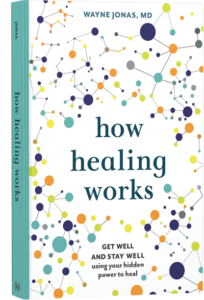Headaches can be mysterious, frustrating, and painful. Why did it come on? When will it go away? Is there anything I can do to stop the pain? There are different kinds of headaches, and some are more serious than others. When dealing with headaches, we look at symptoms, severity, triggers, frequency, and life impact.
Regular Headaches
Often called “tension” headaches, a typical headache is a painful throbbing or intense pulsing in the area of the head. This unpleasant pain can cause pressure and aching. Many physicians suggest drinking water and taking over-the-counter pain pills to help relieve the symptoms. Yet, there are quite a few other types of headaches with different signs and symptoms. Migraines and migraines with auras are common.
General Migraines
While each person is different, certain symptoms can precede this complex disease. Called the prodromal stage, experiences such as increased food cravings, yawning, urination and thirst may precede the headache. Mood changes and constipation can also be signs.
Possible triggers for a migraine:
- Alcohol (especially wine)
- Too much caffeine or caffeine withdrawal
- Medications
- Stress or anxiety
- Strong scents and odors
- Tobacco use
- Medications
- Change in schedule or sleep
- Weather
Once the migraine comes on, there may be throbbing pain on one side of the head or both. Patients experience nausea, neck pain, and vomiting. Also, some have increased sensitivity to smells, lights, and noise.
Aura Migraines
Not all migraines have an aura, but it may happen before or during a migraine. An aura is a disturbance of the nervous system. Don’t worry though, it is reversible. For some, an aura may be a warning sign that a migraine is about to happen. Write down anything unusual that happened before it started. This may help to avoid migraines in the future.
Here are some symptoms that may be a warning that a full-on aura migraine might be starting soon:
- Sensitivity to bright flashes of light
- Blurred vision
- Pins and needles in arms and legs
- Loss of hearing
Migraine’s Relationship with Women
Migraine attacks are three times more common in women and can fluctuate with the stages of life.[iii] Each person has different levels of hormones starting from puberty and the levels fluctuate at varying rates during pregnancy, around menopause, and after menopause. These changes can lead to migraines especially as menopause nears [iv]. The hormones in oral contraceptives can cause migraines for some, but it may lower the instance of migraines for others.
Around the time of menopause, headaches can be related to an increase in medication usage, heavier periods leading to iron deficiency, disrupted sleep, depression, and smoking. Symptoms often lessen when menstrual periods end.
Migraines and Children
Despite women having more migraines than men, for children, the situation is different. Boys are more likely than girls to have migraines before puberty. At that time, estrogen influence makes migraine prevalence rise in girls. Girls are more likely to have their first migraine during the year their periods start. [v]
Genetics matter. If a child has one parent with migraines, they have a 50 percent chance of inheriting it. If both parents experience migraines, the chances rise to 75 percent. [vi] Children experiencing regular migraines should receive medical treatment right away. It is very important to write down any changes that happened around the time a headache starts. This will help track what might be causing the migraine.
Step 1: Keep Track
Because migraines can be connected to lifestyle, it is important to be aware of your body, activities, and emotions. Paying attention daily to how you feel physically, mentally, and even spiritually can make a big difference. Something feeling “off” maybe be an indicator of a coming migraine. The National Headache Foundation offers a printable template to help you track these triggers.
Step 2: Seek Treatment
Seeking treatment is important to improve how you feel both physically and mentally. Depression and anxiety are more common in people with migraine headaches than in those without.
If you (or a family member) are experiencing migraines frequently or for long periods of time, reaching out to a primary care practitioner is the next step. Be honest about your lifestyle regarding stress levels, food consumption, drinking patterns, and health issues. Even those you may not feel are related. Also, provide details about what the migraines feel like and how long they last, and if you have a family history of migraines.
Your doctor may prescribe medications that lessen the pain and those that prevent future migraines. There are three main types of medications. The first is over-the-counter and prescription painkillers that lessen migraine pain; the second are preventative medications, and the last is a new class of drugs called CGRP mAbs inhibitors. Botox has also come forward as a potential option for migraine treatment. [link to guide]
If your primary care doctor feels the migraines are more severe than they can assist with, he or she may refer you to a neurologist. Neurologists specialize in our brains and are the go-to doctors for severe migraines. Of course, speak to your regular physician first. Ask your provider for a good neurologist who is familiar with migraines.
Based on what you identify as your triggers, you can better seek treatment. For example, if anxiety triggers you, see a psychotherapist in addition to your primary care provider. If it is food or exercise-related, you can talk to a nutritionist or health coach.
Patients should also explore evidence-based non-drug treatments like acupuncture, massage, exercise, mindfulness meditation, biofeedback, and guided imagery.
Certain herbs and supplements [link] may also be effective when taken properly. The most used herbs and supplements for migraines are similar to those that treat chronic pain (in that they decrease inflammation in the body), but some are used specifically for migraine headaches. These include: Curcumin; Vitamin B1; Feverfew; Magnesium; and CoQ10. Several of these (especially CoQ10) may take a few months to be effective.
Neuromodulation devices are another non-drug option to explore. They are designed to modulate nervous system activity to reduce migraine headache frequency and intensity. Most neuromodulation devices require the administration or supervision of a physician or a prescription. These devices are reported to not only be preventative but can also be used during a migraine attack to address pain.
This information is the tip of the iceberg when it comes to migraines. Learn more information about in our Migraine Pocket Guide.
Life Impact
Getting treated for migraines will do more than just lessen the pain. Studies show that those with migraines have a lower quality of life than others. Effective treatment improves the quality of life for those with migraines. [vii] Other benefits include higher productivity at work and fewer sick days taken. A healthy life can also allow you to better care for and be with your family and friends.
References
[i] Scripps. (2021, March 29). 5 Surprising Facts About Migraine Headache. Retrieved from https://www.scripps.org/news_items/6103-surprising-facts-about-migraine
[ii] Migraine Headache Foundation. (2020, September 8). Migraine is an extraordinarily prevalent neurological disease, affecting 39 million men, women and children in the U.S. and 1 billion worldwide. Retrieved from https://migraineresearchfoundation.org/about-migraine/migraine-facts/#:~:text=Nearly%201%20in%204%20U.S.,ages%20of%2018%20and%2044.
[iii] Migraine Research Foundation. (2021, March 29) Migraine is a Women’s Health Issue. Retrieved from https://migraineresearchfoundation.org/about-migraine/migraine-in-women/
[iv] Medscape- Headaches in Women with Migraines Rise in Perimenopause https://www.medscape.com/viewarticle/858287?src=ppc_google_rlsa-traf_mscp_news-perspectives-hdle-cohort_md_us#vp_2
[v] Migraine Research Foundation. (2021, March 29.) Migraine in Kids and Teens. Retrieved from https://migraineresearchfoundation.org/about-migraine/migraine-in-kids-and-teens
[v] Mayo Clinic- The Impact of Migraine and the Effect of Migraine Treatment on Workplace Productivity in the United States and Suggestions for Future Research https://www.mayoclinicproceedings.org/article/S0025-6196(11)60562-4/fulltext
 Take Your Health Into Your Own Hands
Take Your Health Into Your Own Hands
Drawing on 40 years of research and patient care, Dr. Wayne Jonas explains how 80 percent of healing occurs organically and how to activate the healing process.
